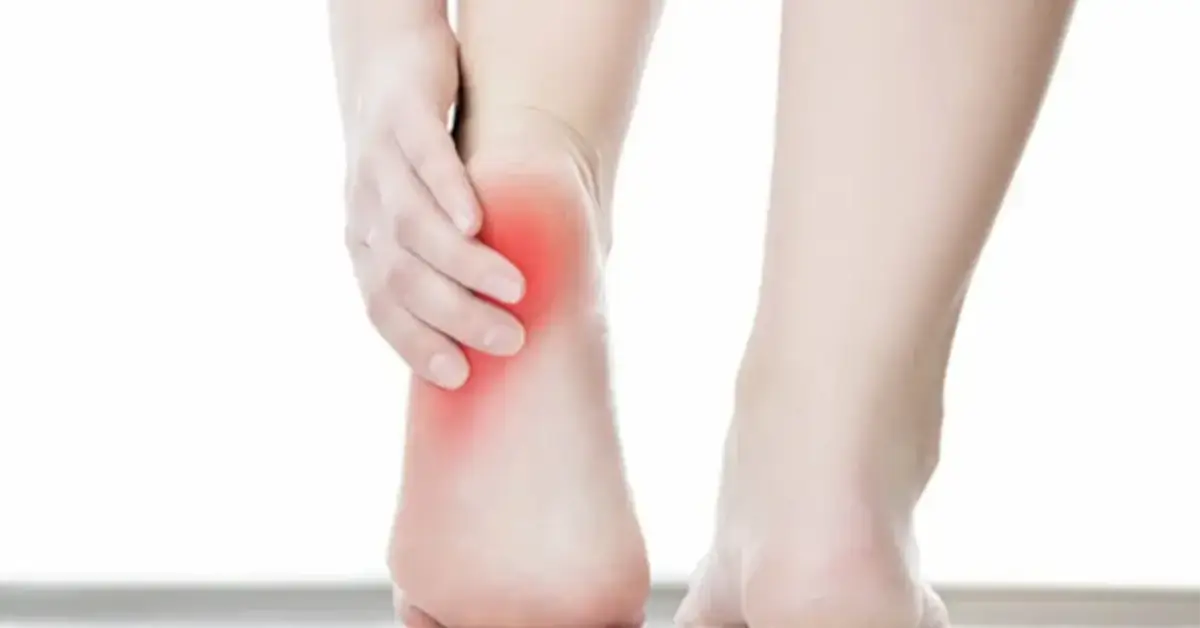Do you suffer from painful feet? Is the pain especially in your heels when getting out of bed in the morning? You might have plantar fasciitis, a painful condition that affects the heels of the feet.
Heel pain is one of the most common clinical conditions that bring patients into the office of a foot specialist. Presenting as heel and arch pain that is particularly worse when getting out of bed in the morning, or after a period of sitting and then standing, fasciitis often causes one to start a search for proper diagnosis and treatment options.
Plantar fasciitis is a term that connotes an inflammation at the area where the plantar fascia, a long, strong ligamentous structure located on the bottom of the foot, attaches to the heel bone. The pain could be from a localized inflammatory process if the injury is acute, to chronic degenerative changes if the pain has been going on for a while. I often hear people say, “My heel spurs are hurting.” The spur is a radiographic finding. It is caused by a constant pull of the fascia onto the heel bone.
How does one get plantar fasciitis? The answer is not so simple. This condition can occur in almost anyone in the population from teenagers to senior citizens. It affects everyday runners, weekend warriors, and home health aides and teachers that spend many hours a day on their feet. Biomechanical etiologies such as foot/arch type, functional processes including tightness of the achilles tendon and calf muscle, as well as overuse injuries are all factors that contribute to increased local stress at the plantar fascia insertion. In my opinion, almost always, plantar fasciitis is connected to tightness of the achilles tendon and muscle group in the back of the leg. Many times, it can present with pain in the back of the heel as well. This is known as Achilles tendinopathy.
Non-surgical treatment usually entails stretching exercises to loosen the plantar fascia and Achilles tendon. This often can be done at home but can include a specific protocol with a physical therapist. Other modalities include proper supportive shoe gear, off-the-shelf or custom foot orthotics, NSAIDS like Motrin, night splints and steroid injections to relieve the pain. It’s important to note that the injection will help the pain, but not treat the underlying problem. Often, patients come to my office after receiving several of these.
Unfortunately, in some patients, symptoms persist and the problem prompts additional treatment and a step up in therapy. Imaging modalities such as an MRI or an ultrasound are very helpful in identifying any tear or degenerative changes in the plantar fascia. It can also make sure the pain is not from another cause, such as entrapped nerves or a stress fracture of the heel bone.
At the Center for Musculoskeletal Disorders, when conservative measures have not yielded adequate results, we turn to minimally invasive techniques to treat our patients. There are several modalities that offer relief by attempting to “jumpstart” the patient’s own healing response to a chronic problem. One of our modalities of choice, amongst several, is called Tenex. Percutaneous ultrasonic micro debridement (Tenex procedure) is a safe and quick technique usually performed at a surgical center with the patient under mild sedation.
With real-time ultrasound imaging, the physician is able to locate pathologic thickened scar tissue and perform precise tissue and fascia removal while sparing healthy tissue with built-in safety measures and sensors. This minimally invasive procedure can often be combined with PRP (platelet rich plasma) or cryopreserved amniotic membrane injections, both of which help create a local inflammatory response rich in growth factors that aid in the body’s own healing mechanism. Recovery is typically two to three weeks in a walking boot with partial weight bearing.
If you suffer from heel pain, and treatments such as physical therapy, cortisone injections and orthotics offered minimal to no relief, consider trying Tenex. If you would like to know more about the Tenex procedure, please call our office to set up a consultation.

